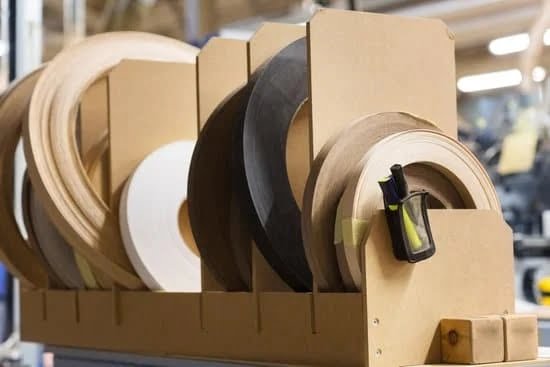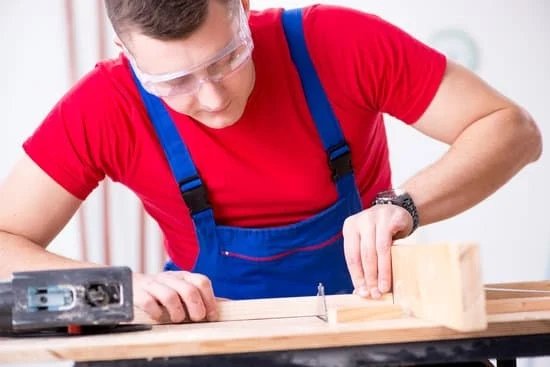What tools did Vikings use for woodworking? The Viking Age was a time of skilled craftsmanship, and woodworking was an essential part of their daily lives. This article will explore the techniques, tools, and cultural significance of Viking woodworking, as well as its enduring impact on modern craftsmanship.
Woodworking held great importance in Viking culture, with wood being a vital resource for their survival. From building shelters to crafting tools and weapons, the Vikings relied heavily on their woodworking skills. Understanding the history of woodworking in Viking society provides valuable insight into the practical and cultural significance of this craft.
The use of specific tools was crucial to Viking woodworking, from axes for felling trees to chisels for intricate carvings. By taking a closer look at these tools and understanding how they were used, we can gain a better understanding of the techniques and methods employed by the Vikings in shaping and joining wood. This article will delve into the various woodworking tools used by the Vikings and how they contributed to their mastery of this craft.
History of Woodworking in Viking Culture
The art of woodworking was an essential skill in Viking culture, with wood playing a crucial role in Norse society. From shipbuilding to crafting furniture and utensils, the Vikings relied on their woodworking prowess for both practical and artistic purposes.
The Importance of Wood in Norse Society
Wood was abundant in the Nordic lands, making it a readily available resource for the Vikings. The seafaring nature of their culture also meant that they had access to various types of timber from different regions, allowing them to experiment with different wood species for their woodworking projects. The versatility and strength of wood made it an ideal material for constructing everything from longships and houses to tools and decorative objects.
Viking Woodworking Tools
The Vikings used a variety of tools for their woodworking endeavors. Essential tools included axes for shaping and carving wood, chisels for finer details, adzes for hollowing out wooden objects, and drawknives for shaping cylindrical pieces. These tools were often made from iron or bronze and were crafted with precision to ensure their effectiveness in woodworking tasks.
Legacy of Viking Woodworking
The legacy of Viking woodworking is evident in the enduring impact it has had on modern woodworking and craftsmanship. Many techniques and methods used by the Vikings are still employed by contemporary woodworkers, demonstrating the lasting influence of Viking woodworking tradition. Additionally, the cultural significance of woodworking in Norse society has inspired artisans to incorporate Viking aesthetic elements into their craft, further preserving the heritage of Viking woodworking.
A Closer Look at Viking Woodworking Tools
Woodworking was an essential skill in Viking society, and the tools they used played a crucial role in shaping their crafts. From axes to chisels, Vikings relied on a variety of tools to create everything from household items to intricate wood carvings. It is fascinating to explore what tools Vikings used for woodworking and how these instruments contributed to their mastery of the craft.
The Viking Woodworking Tool Kit
Vikings primarily used hand tools for their woodworking endeavors. One of the most iconic and versatile tools was the axe, which served multiple purposes. In addition to felling trees, axes were also used for shaping wood and creating rough-hewn designs. Chisels were another indispensable tool, allowing Vikings to carve precise details and smooth out surfaces with precision.
Specialized Woodworking Tools
In addition to axes and chisels, Vikings also utilized other specialized woodworking tools such as adzes and drawknives. Adzes were particularly useful for hollowing out wooden vessels like bowls or troughs. Drawknives, on the other hand, were perfect for shaping cylindrical items like handles or legs.
What Sets Viking Woodworking Tools Apart
The craftsmanship and durability of Viking woodworking tools set them apart from those of other cultures. The meticulous design and keen edge retention of these instruments ensured that woodworkers could create intricate pieces with precision and efficiency – a testament to the ingenuity of Viking tool makers.
It is evident that the skillful use of woodworking tools was instrumental in crafting the impressive range of wooden objects found in Viking culture, from everyday utensils to ornate decorative items. This further emphasizes the importance of understanding what tools Vikings used for woodworking in appreciating both their craftsmanship and legacy that continues to influence modern woodworking practices today.
Techniques and Methods
Woodworking was an essential skill in Viking society, and the tools they used were vital to their ability to craft a wide range of objects from wood. From building longships to creating furniture and utensils, Vikings relied on specific techniques and methods to carve, shape, and join wood effectively.
One of the primary tools used by Vikings for woodworking was the axe. Not only was it crucial for felling trees, but it also served as a versatile tool for shaping and carving wood. The adze, a similar tool to the axe but with a curved blade, was also commonly used for smoothing and shaping wood. Additionally, Viking craftsmen utilized chisels of various sizes to create intricate designs and details on their wooden creations.
In addition to these tools, Vikings employed techniques such as carving with knives and using drills for creating holes in wood. They were also skilled at joining pieces of wood together using mortise and tenon joints or pegged joints. These methods allowed them to construct durable and functional wooden items that were essential to daily life in the Viking Age.
Overall, the combination of specialized tools and techniques allowed Vikings to master the art of woodworking, producing everything from sturdy ships to beautifully crafted furniture. Their expertise in woodworking not only fulfilled practical needs but also contributed significantly to the artistic and cultural legacy of the Viking era.
The Role of Woodworking in Viking Shipbuilding
The Viking era was known for its formidable longships, which were crucial to their success in exploration and conquest. But what tools did Vikings use for woodworking when it came to crafting these impressive vessels? The answer lies in the specialized tools and techniques that were employed by Viking shipbuilders.
One of the most important woodworking tools used by Vikings for shipbuilding was the broad axe. This tool was essential for shaping the large timbers necessary for constructing the hull of a longship. Vikings also utilized adzes, which are similar to axes but with a curved blade, to hollow out the interior of the hull. Additionally, chisels were used for finer details and joinery work, allowing craftsmen to create precise fittings for the ship’s various components.
In terms of techniques, Viking shipbuilders employed traditional methods such as mortise-and-tenon joints and clinker construction. Mortise-and-tenon joints involved carving out a hole (mortise) in one piece of wood and inserting a protrusion (tenon) from another piece to create a secure joint.
Meanwhile, clinker construction involved overlapping planks that were fastened together with iron rivets or treenails (wooden pegs), resulting in a strong and watertight structure. These techniques, combined with the use of their specialized tools, allowed Vikings to create seaworthy longships that were not only functional but also integral to their maritime exploits.
| Woodworking Tool | Use |
|---|---|
| Broad Axe | Shaping large timbers for hull construction |
| Adze | Hollowing out the interior of the hull |
| Chisel | Precise fittings and joinery work |
The Cultural Significance of Woodworking in Viking Art and Craftsmanship
Woodworking played a significant role in the art and craftsmanship of the Viking culture, with wood being one of the most essential materials for creating everyday items, decorative objects, and even the renowned longships. The Vikings were master craftsmen and had a deep appreciation for the beauty and versatility of wood, utilizing it to create intricate carvings, ornate furniture, and functional tools.
Viking art often featured elaborate wood carvings, depicting scenes from Norse mythology, animals, and geometric patterns. These carvings showcased the skill and creativity of Viking woodworkers, who used a variety of tools to achieve such detailed artwork. The cultural significance of woodworking in Viking art is evident in the numerous surviving artifacts that display exquisite wooden carvings, demonstrating the craftsmanship and artistic talent of the Norse people.
In addition to their artistic endeavors, woodworking also played a crucial role in crafting practical items for everyday use. Vikings relied on wooden utensils such as bowls, plates, and spoons for eating and cooking. Furthermore, they created furniture such as chairs, benches, and beds using traditional woodworking techniques. The functional aspect of woodworking was an integral part of Viking society, providing them with essential tools for daily life.
The cultural significance of woodworking in Viking art and craftsmanship extends beyond mere practicality; it reflects the values and beliefs of Norse society during that time. Woodworking was not just a means of producing useful items but also a form of creative expression that honored their rich cultural heritage. As we continue to study Viking artifacts and delve into their history, we gain a deeper understanding of how woodworking shaped their artistic expression and contributed to their cultural identity.
Common Woodworking Projects in Viking Society
Viking society was known for its exceptional woodworking skills and the wide array of projects that they took on. From crafting furniture to creating utensils and decorative objects, the Vikings were highly skilled in various types of woodworking. This section will explore the common woodworking projects in Viking society and shed light on the tools and techniques they used for these endeavors.
One of the most common woodworking projects in Viking society was the crafting of furniture such as chairs, tables, and beds. These pieces were essential for daily living and often showcased intricate carvings and designs. Additionally, the Vikings crafted a variety of utensils including bowls, spoons, and plates from wood. These items were not only practical but also served as a form of artistic expression.
In terms of decorative objects, the Vikings excelled in creating wooden statues, carvings, and ornaments that depicted Norse mythology and symbolism. These intricate pieces were not only visually stunning but also held significant cultural and religious meaning for the Viking people. The craftsmanship involved in these projects highlights the skill and expertise of Viking woodworkers.
| Woodworking Project | Description |
|---|---|
| Furniture | Intricately carved chairs, tables, and beds |
| Utensils | Bowls, spoons, plates crafted from wood |
| Decorative Objects | Wooden statues, carvings depicting Norse mythology |
Legacy of Viking Woodworking
The legacy of Viking woodworking has had a significant influence on modern woodworking and craftsmanship. The tools, techniques, and mindset of the Vikings have left a lasting impact on the way we approach woodwork today.
One of the most influential aspects of Viking woodworking is their innovative use of tools. Vikings used a variety of tools for woodworking, including axes, adzes, drawknives, augers, chisels, and gouges. These tools were expertly crafted and designed for specific tasks, allowing the Vikings to create intricate and durable woodwork. The craftsmanship of these tools has inspired modern tool design and continues to be a source of admiration for woodworkers around the world.
In addition to their tools, the techniques and methods used by the Vikings in woodworking have also made a lasting impression on modern practices. The Vikings were skilled at carving, shaping, and joining wood with precision and artistry. Their expertise in steam-bending wood, carving intricate designs, and creating tight-fitting joinery has been studied and adapted by contemporary woodworkers seeking to learn from their mastery.
The cultural significance of Viking woodworking in art and craftsmanship has also shaped modern woodworking styles. The intricate carvings found on Viking ships, furniture, utensils, and decorative objects have inspired contemporary artists and craftsmen to incorporate similar designs into their work. The use of natural materials and the emphasis on functionality combined with beauty continue to be driving forces in modern woodworking inspired by Viking tradition.
Conclusion
In conclusion, the mastery of Viking woodworking techniques and the enduring impact they have had on modern woodworking and craftsmanship cannot be overstated. The history of woodworking in Viking culture reveals the importance of wood in Norse society, from shipbuilding to crafting decorative objects. The tools used by Vikings for woodworking, such as axes and chisels, were essential for carving, shaping, and joining wood, showcasing their skill and innovation in this craft.
Viking woodworking not only played a practical role in society but also held cultural significance, evident in the intricate designs found in Viking art and craftsmanship. From furniture to utensils to decorative objects, woodworking projects were common in Viking society and showcased the level of craftsmanship and attention to detail that the Vikings possessed. These skills have left an indelible mark on modern woodworking practices, inspiring artisans and craftsmen to continue exploring and innovating in this timeless craft.
The legacy of Viking woodworking lives on through its influence on modern craftsmanship, serving as a testament to the enduring impact of this ancient practice. By understanding the history of woodworking in Viking culture and studying their techniques and methods, we gain a deeper appreciation for the mastery of Viking woodworking and its lasting contribution to the world of craftsmanship.
What tools did vikings use for woodworking serve as a reminder of the innovation and skill that defined this ancient craft, leaving an enduring impact that continues to inspire artisans today.
Frequently Asked Questions
What Type of Tools Did Vikings Use?
Vikings used a variety of tools, including axes, knives, and adzes for woodworking and shipbuilding. These tools were typically made from iron or steel, with wooden handles for better grip.
What Did Vikings Cut Wood With?
Vikings cut wood primarily with axes, which were essential for their daily lives. They used different types of axes for various tasks such as felling trees, shaping timber, and woodworking. The Viking axe was a versatile tool that played a crucial role in their survival.
How Did Vikings Make Use of Wood?
Vikings made extensive use of wood in their daily lives, utilizing it for building ships, houses, furniture, and tools. Wood was also used for fuel as well as creating everyday items like bowls, spoons, and utensils. Their expert woodworking skills allowed them to thrive in their environment by making the most out of this natural resource.

Hi everyone! I’m a woodworker and blogger, and this is my woodworking blog. In my blog, I share tips and tricks for woodworkers of all skill levels, as well as project ideas that you can try yourself.





